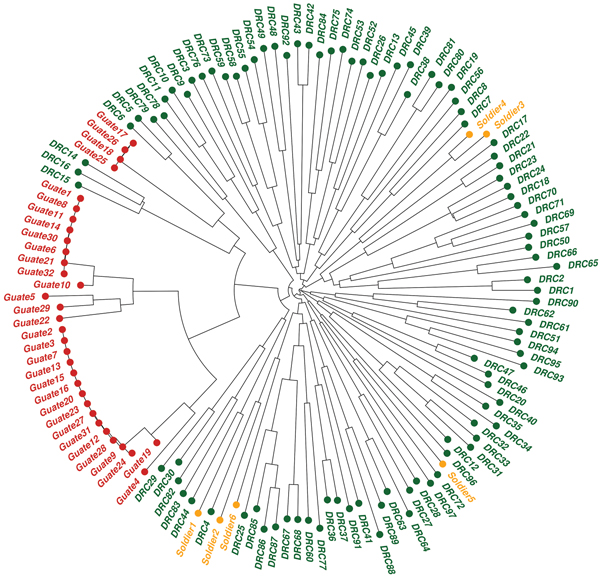Volume 20, Number 6—June 2014
Research
Genetic Evidence of Importation of Drug-Resistant Plasmodium falciparum to Guatemala from the Democratic Republic of the Congo
Figure 3

Figure 3. Neighbor-joining tree of 3 Plasmodium falciparum populationsPrefixes of genomes indicate parasite origins: Green text indicates parasite populations from the Democratic Republic of the Congo (DRC); orange indicates parasite populations detected in soldiers who were returning from the DRC to Guatemala; red indicates parasite populations from Guatemala.
Page created: May 16, 2014
Page updated: May 16, 2014
Page reviewed: May 16, 2014
The conclusions, findings, and opinions expressed by authors contributing to this journal do not necessarily reflect the official position of the U.S. Department of Health and Human Services, the Public Health Service, the Centers for Disease Control and Prevention, or the authors' affiliated institutions. Use of trade names is for identification only and does not imply endorsement by any of the groups named above.